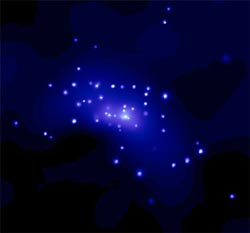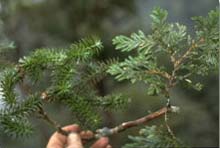
To help the nature to recover from harmful impacts of the mining industry, Svetlana Mesyats and her team from the Geological Institute of the Kola Research Center RAS offer the method, which implies the application of a thin invisible polymeric film onto the soil surface and provides for a fast and successful minesite recultivation.Polymer Protects Grass
It is not surprising that such a polymeric covering is invented in Apatity. People leaving on the Cola Peninsula often need to dea

In the Arctic and Antarctic seas the water gets cold to minus 1.9 C in winter, but somehow some fish live there. These cold-blooded creatures survive in the icy water because the blood in their veins contains antifreeze proteins and glycoproteins. High levels of the antifreeze proteins are found in the blood serum, they are present in cell cytoplasm and all body fluids except urine. Due to their structure, molecules of antifreeze glycoproteins (AFGP) prevent growth of ice crystals. Natural antifreeze

A controversial research study here has found that exposing cells infected with feline immunodeficiency virus – a surrogate for HIV – to methamphetamine increases those cells’ ability to replicate the deadly virus as much as 15-fold.
The finding, if confirmed by ongoing animal studies, could answer important questions about how lentiviruses such as FIV and HIV can gain a foothold in the brain. That knowledge is vital in slowing or lessening the dementia that often accompanies AIDS and s

Like ’flower power’ tattoos on aging ex-hippy baby boomers, unexpectedly large numbers of neutron stars and black holes in elliptical galaxies suggest some of these galaxies lived through a much wilder youth. The discovery by NASA’s Chandra X-ray Observatory may require a revision of how elliptical galaxies evolved.
“For the first time, Chandra has allowed us to distinguish hundreds of star-like sources that are black holes and neutron stars in distant elliptical galaxies,” said Craig Sara

While industrial products like chlorofluorocarbons are largely responsible for current ozone depletion, a NASA study finds that by the 2030s climate change may surpass chlorofluorocarbons (CFCs) as the main driver of overall ozone loss.
Drew Shindell, an atmospheric scientist from NASA’s Goddard Institute for Space Studies (GISS) and Columbia University, N.Y., finds that greenhouse gases like methane and carbon dioxide are changing the climate in many ways. Some of those effects include wat

An unusual conifer found in a remote area of northern Vietnam has been identified as a genus and species previously unknown to science. The limestone ridges where the tree grows are among the most botanically rich areas in Vietnam, said Daniel Harder, currently director of the University of California at Santa Cruz (UCSC) Arboretum and a co-discoverer of the new species. The discovery is published in the current issue of the journal Novon.
“Biologists don’t need to contemplate finding life

– new calculation confirms standard model of particle physics. Contribution of hadronic vacuum polarization determined with unprecedented accuracy. The magnetic moment of the muon is an important precision parameter for…
Technique may prevent formation of unwanted waves that siphon off needed energy. Heating plasma to the ultra-high temperatures needed for fusion reactions requires more than turning the dial on a…

An international team of astronomers, led by researchers from the Astronomical Observatory of the University of Warsaw, have identified a new class of cosmic X-ray sources. The findings have been…

Antibody that Neutralizes Inhibitory Factors Involved in Nerve Regeneration Leads to Enhanced Motor Function after Acute Spinal Cord Injury. Researchers at 13 clinics in Germany, Switzerland, the Czech Republic and…

How the body’s natural killer cells could fight leukemia. Every year, some 13,000 people in Germany are diagnosed with leukemia. Despite intensive chemotherapy, around one in two of them die….

… eco-friendly reactor converts air and water into ammonia. Producing enough ammonia to feed the world comes with a large carbon footprint;. process described in new UB-led study could help…

How simulations help manufacturing of modern displays. Modern materials must be recyclable and sustainable. Consumer electronics is no exception, with organic light-emitting diodes (OLEDs) taking over modern televisions and portable…

“Neurons that fire together, wire together” describes the neural plasticity seen in human brains, but neurons grown in a dish don’t seem to follow these rules. Neurons that are cultured…

The quest for sustainable energy solutions has been a major focus of scientific research for decades. Solar energy, a clean and renewable source, has emerged as a promising alternative to…

With a processing speed a billion times faster than nature, chip-based laser neuron could help advance AI tasks such as pattern recognition and sequence prediction. Researchers have developed a laser-based…

New technology could remotely identify various types of plastics, offering a valuable tool for future monitoring and analysis of oceanic plastic pollution. Researchers have developed a new hyperspectral Raman imaging…

Artificial Intelligence (AI) has established a strong presence across industries, large and small. The “VoBaKI” research project has empowered small and medium-sized enterprises (SMEs) with an innovative tool to independently…